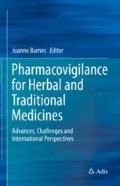Abstract
The traditional systems of medicine in India are Ayurveda, yoga and naturopathy, Unani, Siddha and homoeopathy (AYUSH). There are provisions in the Drugs and Cosmetics Act 1940 and Drugs and Cosmetics Rules 1945 for the regulatory framework and for monitoring the quality, safety and efficacy of medicines belonging to AYUSH systems. To collect, collate and assess the safety of AYUSH medicines, in 2007, the Government of India launched a National Pharmacovigilance Programme for ASU (NPP-ASU) medicines. Under the programme, the functions and responsibilities of the National Pharmacovigilance Centre, Intermediary Pharmacovigilance Centres, and Periphery Pharmacovigilance Centres are defined. The programme has been implemented with the support of the Pharmacovigilance Programme of India (PvPI), and the World Health Organization, among others. Through this programme, the safety of AYUSH medicines will be ensured and also a comprehensive adverse events database for ASU&H medicines will be established.
Access this chapter
Tax calculation will be finalised at checkout
Purchases are for personal use only
References
Ministry of AYUSH. https://www.ayush.gov.in. Accessed 30 Oct 2020
Nihariha S, Padmavati M (2013) Herbal drug regulation and commercialization: an Indian industry perspective. J Altern Complement Med 19(12):957–963. https://doi.org/10.1089/acm.2012.0275
World Health Organization. Pharmacovigilance. https://www.who.int/medicines/areas/quality_safety/safety_efficacy/pharmvigi/en/. Accessed 30 Oct 2020
Kalaiselvan V, Saurabh A, Kumar R, Singh GN (2015) Adverse reactions to herbal products: an analysis of spontaneous reports in the database of the pharmacovigilance programme of India. J Herb Med 5(1):48–54. https://doi.org/10.1016/j.hermed.2015.01.006
Naranjo CA, Busto U, Sellers EM et al (1981) A method for estimating the probability of adverse drug reactions. Clin Pharmacol Ther 30(2):239–245. https://doi.org/10.1038/clpt.1981.154
Tay C (2018) Liver fears: NZ health ministry issues further warning over supplement ingredient. https://www.nutraingredients-asia.com/Article/2018/12/03/Liver-fears-NZ-health-ministry-issues-further-warning-over-supplement-ingredient. Accessed 30 Oct 2020
Therapeutic Goods Administration (2019) Arthrem capsules. https://www.tga.gov.au/alert/arthrem-capsules. Accessed 30 Oct 2020
Heinrich M, Barnes J, Prieto-Garcia JM, Gibbons S, Williamson EM (2018) Methods in natural product analytical chemistry. In: Fundamentals of pharmacognosy and phytotherapy, 3rd edn. Elsevier, Edinburgh, p 106
Savage RL, Hill GR, Barnes J, Kenyon SH, Tatley MV (2019) Suspected hepatotoxicity with a supercritical carbon dioxide extract of Artemisia annua in grapeseed oil used in New Zealand. Front Pharmacol 10:1448. https://doi.org/10.3389/fphar.2019.01448
WHO Pharmaceuticals Newsletter No. 5 (2019). https://www.who.int/medicines/publications/PharmaNewsletter5-19/en/. Accessed 30 Oct 2020
Jayanti R, Debadatta C, Rudrajit P, Kunal S (2018) Prevalence of the use of complementary and alternative medicine in an eastern Indian population with emphasis on tribal/ethnic minority group. J Taibah Univ Med Sci 13(4):384–389. https://doi.org/10.1016/j.jtumed.2018.04.001
Author information
Authors and Affiliations
Corresponding author
Editor information
Editors and Affiliations
Rights and permissions
Copyright information
© 2022 Springer Nature Switzerland AG
About this chapter
Cite this chapter
Kalaiselvan, V., Ruknuddin, G. (2022). Pharmacovigilance for Indian Traditional Medicines. In: Barnes, J. (eds) Pharmacovigilance for Herbal and Traditional Medicines. Adis, Cham. https://doi.org/10.1007/978-3-031-07275-8_22
Download citation
DOI: https://doi.org/10.1007/978-3-031-07275-8_22
Published:
Publisher Name: Adis, Cham
Print ISBN: 978-3-031-07273-4
Online ISBN: 978-3-031-07275-8
eBook Packages: Biomedical and Life SciencesBiomedical and Life Sciences (R0)

